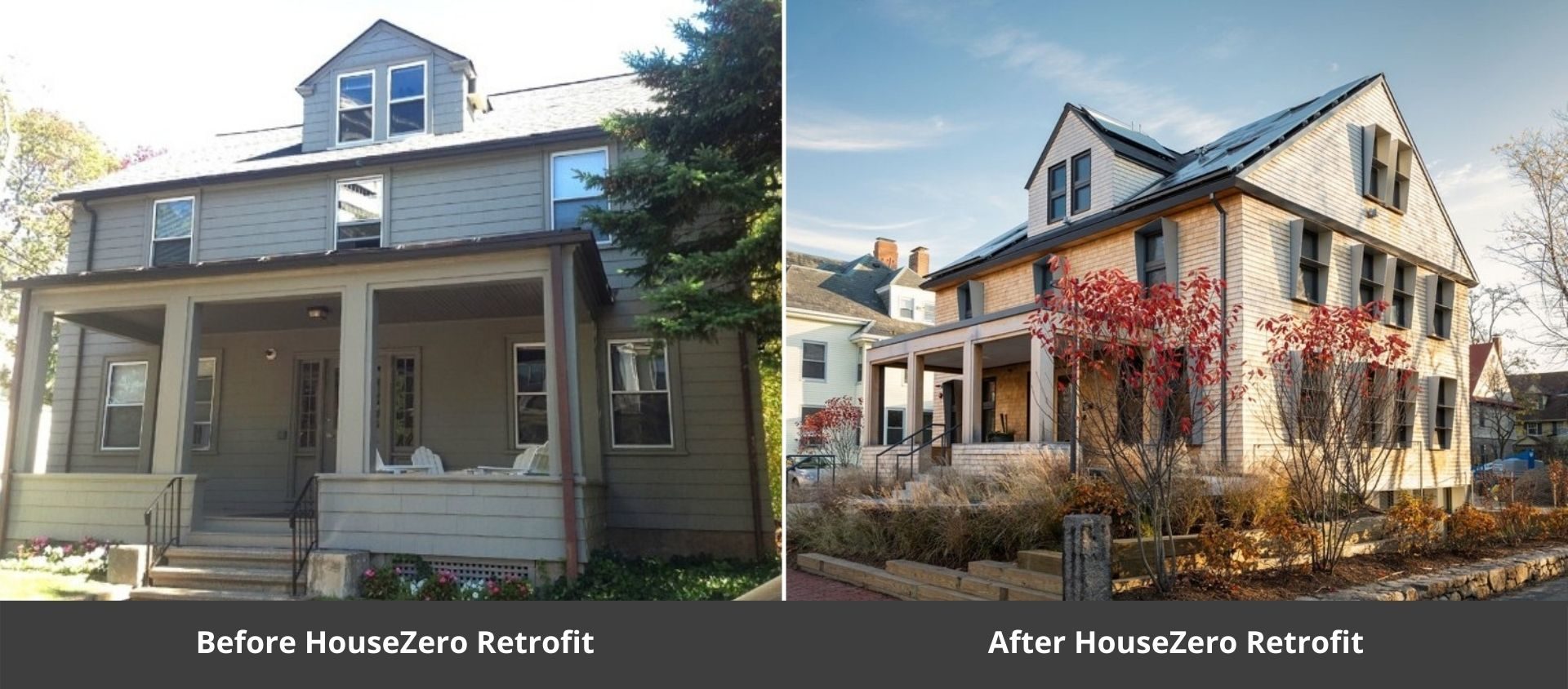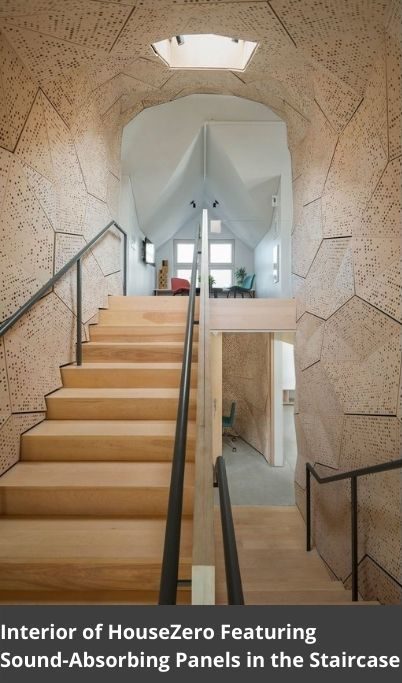Amid a global climate crisis, Harvard’s Center for Green Buildings and Cities (CGBC) releases encouraging data on experimental lab HouseZero
CAMBRIDGE, Mass., November 20, 2021 – The Harvard Center for Green Buildings and Cities (CGBC) at the Graduate School of Design has just published “Zero-carbon Balance: The Case of HouseZero,” the first full accounting of the structure’s embodied carbon and a detailed methodology behind calculating its zero-carbon balance in the peer-reviewed journal Building and Environment. In tandem, the CGBC has also released a summary of the lab’s full-year performance results.
Prof. Ali Malkawi, Founding Director of the CBGC, said the research in the paper, as well as the summary of results, reflect a “positively promising performance” by HouseZero with potentially far-reaching implications amid a deepening, intertwined climate and energy crisis.
In the published paper, the HouseZero research team evaluated the building’s performance by considering the whole lifecycle of CO2e emissions of a building: embodied emissions, operational emissions, and grid-energy carbon offsetting from onsite renewables. The results highlight important takeaways related to buildings’ net-zero carbon balance:
- Balancing carbon emissions over the life of a building means calculations are sensitive to factors such as future technology development, including improved renewable energy sources and a cleaner energy supply.
- More transparent and consistent accounting of carbon emissions is needed for all building life cycle stages, such as product replacement occurrence and the building’s end-of-life stage.
- Accounting for carbon emissions of the entire building is important and should include embodied carbon emissions associated with heating and cooling; onsite renewables; and other mechanical, electrical and plumbing systems.

HouseZero, the residential-to-institutional retrofit project and laboratory, which also serves as the headquarters of the Harvard CGBC, is located in the Mid Cambridge Neighborhood Conservation District in Cambridge, MA. An example of an aspiring fully net-zero carbon building. Most HouseZero operating systems were commissioned in May of 2020, although the building opened its doors earlier.
Prof. Malkawi said, “The CGBC, along with our architectural and engineering partners, is very encouraged by the project’s progress to date. Together, we firmly believe, and our research supports this assertion, in the overarching importance of transparency when declaring a zero-carbon balance.”
Dean Sarah M. Whiting, of the Harvard Graduate School of Design, and an operation board member of the CGBC, added, “HouseZero not only promises to be a core contributor to Harvard’s transition to a net-zero carbon future, but also an important and clarifying voice in establishing what we mean when we use common terms like ‘embodied carbon’ and ‘carbon balance.’” Jonathan Grinham, CGBC Senior Research Associate and co-author of the paper, explained, “there are robust standards for whole building lifecycle assessment (LCA), but there is little conformity on what is actually reported and there is a serious need for a universal definition of zero-carbon emissions buildings.” The new, published research describes the life cycle assessment methods that were used in detail, including system boundaries, data availability, scenarios, assumptions, uncertainties and reports the details of the outcome.
In addition, the just-released FY 2021 HouseZero Performance Summary provides one year of actual operational data (a period during which the building was not occupied due to the pandemic). Based on data from this first operational year (June 2020-May 2021), HouseZero demonstrates that surplus onsite renewable energy generation can offset emissions associated with the primary building structure (which does not include emissions from technical equipment), provided that the photovoltaic (PV) production can achieve optimal efficiency as designed, and the building performance is maintained. Using existing standards, calculations were conducted by the CGBC based on total load without IT (e.g., data servers) and plug loads and the interpolation of some unavailable data.

As reflected in the Performance Summary, while the building has been able to provide excess generated energy to the local power grid, researchers recognize that adding more PVs, while being mindful of the additional embodied carbon emissions, will offset the added energy demand from onsite data servers used for research. As part of ongoing experiments, the CGBC continues to explore strategies and technologies to further reduce electricity consumption in HouseZero.
Tor Helge Dokka, chief energy consultant of Skanska and a HouseZero research team member, said, “The building integration and coupling of passive-active systems is very important for the reduction of operational energy use, and, therefore, positively impacts the building’s net-carbon balance.”
Tine Hegli, one of the lead HouseZero architects from Snohetta, added, “The building’s integrated design solutions reduce embedded CO2e emissions associated with technical equipment such as ducts and fans, suspended ceiling systems and solar shading devices – all elements with high occurring replacement.”
The recent UN World Climate Change Conference in Glasgow and World Economic Forum report on green buildings and zero-carbon goals has reinforced the worldwide urgency and need for meeting the needs of the building industry to ensure a better future for our shared environment. And as the global building industry, which accounts for 36% of global energy consumption, shifts to reduce CO2e emissions and supply the energy grid with renewable energy, world economies are joining the urgent call for net-zero-carbon emissions buildings.
At Harvard, the CGBC at the Graduate School of Design, through its experimental living lab HouseZero, is focused on energy efficiency and meeting the challenges of designing, building and operating net-zero carbon emission structures. The CGBC aims to continue contributing to the knowledge platform to help enable informed decisions for green buildings and cities.
For more information on the core findings of the published journal article, please visit the CGBC website here. The FY 2021 HouseZero Performance Summary can also be found on the CGBC website here.
For more information, contact:
Taylor Ko
[email protected]
617-496-1331
